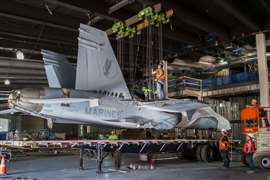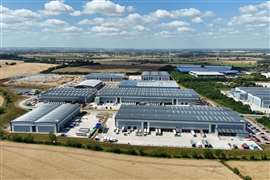Regional report on Southern Africa: Infrastructure Plans
03 October 2012

The South African construction market has seen more ups and downs than most over the last few years. The run-up to the 2010 World Cup created something of a boom as stadiums were built along with their supporting infrastructure. The event was also a catalyst for other schemes that were not strictly linked to the tournament - the Gautrain rail link between Pretoria and Johannesburg being the most prominent example.
But the World Cup party was followed by quite a hangover, as projects came to an end, public budgets were tightened and the global economic slowdown took its toll.
It was a situation that was not helped by a series of cartel investigations in the construction sector's major contractors and materials suppliers. In fact the number of cases was such that South Africa's Competition Commission set up a special fast-track settlement process just for companies in the construction sector that was open for a limited time in 2010 and 2011.
However, this chapter in the industry's history now looks to be closing, and a new sense of optimism seems to be taking hold.
This has been driven by a report earlier this year from the Presidential Infrastructure Coordinating Commission (PICC), which set out to put together a co-ordinated infrastructure investment plan that would address South Africa's needs and drive integration with other states in the region.
The report lays out 17 Strategic Integrated Projects (SIPs) and each of these comprises individual infrastructure schemes. There are a total of 150 potential projects identified within the SIPs
The overall aim was to address structural problems in the economy and areas where the lack of infrastructure has led to slow growth. Another key aim has been to generate 5 million new jobs by 2020, and it is expected that many of these will come in the construction phase of the schemes.
There is a construction aspect to all 17 of the SIPs, although some are more significant than others as far as the industry is concerned. SIPs 1 to 5 are described as geographic projects and are designed to improve links to key regions. They include plans to develop the country's northern mineral belt, strengthening links between industrial hubs and the port of Durban, promoting development of the South East, pressing ahead with road rail and bulk water projects in the North West Province and increasing port and industrial capacity in the Northern Cape.
There are three SIPs focussed on the energy sector. One is a general scheme to increase electricity generation capacity, a second will focus on green energy and a third will address distribution issues with the aim of giving access to electricity to the entire population.
Another three SIPs are targeted at what the PICC describes as 'spatial' issues. These include one set of projects to develop municipal infrastructure in 23 poor districts, with projects aimed at water, electricity, sanitation and road maintenance. Another project will look at the integration of public transport and urban planning and a final programme will address issues in rural infrastructure and investment in agriculture.
Three SIPs in the 'Social infrastructure' category will focus on public buildings, with one to revitalised hospitals and health facilities, another to build schools across the nation and a third to develop infrastructure in the Higher Education sector.
Two SIPs will be focussed on knowledge issues, and one aim is that all households will have access to broadband internet connections by 2020. This SIP also includes the setting up of Internet 'Points of Presence' for municipalities and rural areas, as well as the roll-out of communication technology to schools.
A second knowledge SIP is targeted specifically at the Square Kilometre Array (SKA) radio telescope project. The concept is to have receiving stations spread out across the southern hemisphere linked to central cores in South Africa and Australia to give a total collecting area of 1 km2.
The final SIP focuses on regional schemes of mutual benefit to South Africa and other countries, and the PICC cites examples like hydro power projects in Lesotho, Zambia, Mozambique and the Democratic Republic of Congo (DRC) as examples, alongside transport corridors.
Funding
So far so good, but for all these plans, the PICC is short on the details of how they will be funded. The initial announcement in April said only, "Initial costing of all 17 SIPs has been done - these are being reviewed, stress-tested and refined."
However, it did give some clues as to the avenues it was investigating. It is keen to attract private sector investment through Public Private Partnership (PPP) schemes and also wants to look at innovative sources of finance, such as attracting pension funds as investors. It is also looking at traditional financing methods and the capacity of domestic and international finance markets.
So while the PICC's report has lifted spirits in the South African industry, there is also a sense that progress with the projects is likely to be fairly measured. Erik Elsmark, Southern Africa district manager at Caterpillar said, "The expectation now is that rather than a huge amount being allocated in a bubble to infrastructure and construction, a more cautious growth of +5% or so per year will be the case."
Another issue is that PPP schemes have something of a chequered history in South Africa. Toll roads have been criticised by Trade Unions among others because they are not accessible to the poor. In addition, a pressure group, Opposition to Urban Tolling Alliance (OUTA), was set up earlier this year specifically to oppose plans to set up electronic tolls on recently upgraded roads in the Gauteng region.
There is no doubt that government mishandling of the issue has caused considerable anger, but according to construction equipment dealer Barloworld's executive director Charl Groenewald, it is a complex debate.
"There's a reluctance to pay for use. But to expand on that, there's a reluctance to pay for use when there isn't an alternative. People say they don't mind paying for toll roads if it's not a daily part of life. The problem is that the toll roads are the ones people use every day. People say there should have been a consultation, and alternatives like a fuel levy or improving public transport should have been considered."
Mr Elsmark added, "The public-private model isn't disputed, but there is a concern about the lack of transparency. The high level of tolls was completely unexpected, and they came on top of some big increases in the price of fuel."
Future growth
The funding issue is the major barrier to what otherwise look like solid and well thought-out plans from the PICC, and the current hostility towards PPPs in some parts of South African society could make it more difficult to push the projects ahead. Hostility to PPPs will also be a turn-off to potential investors and concession holders, so it is important that this issue and the wider funding questions are overcome so the 17 SIPs can go ahead and benefit the entire region.





